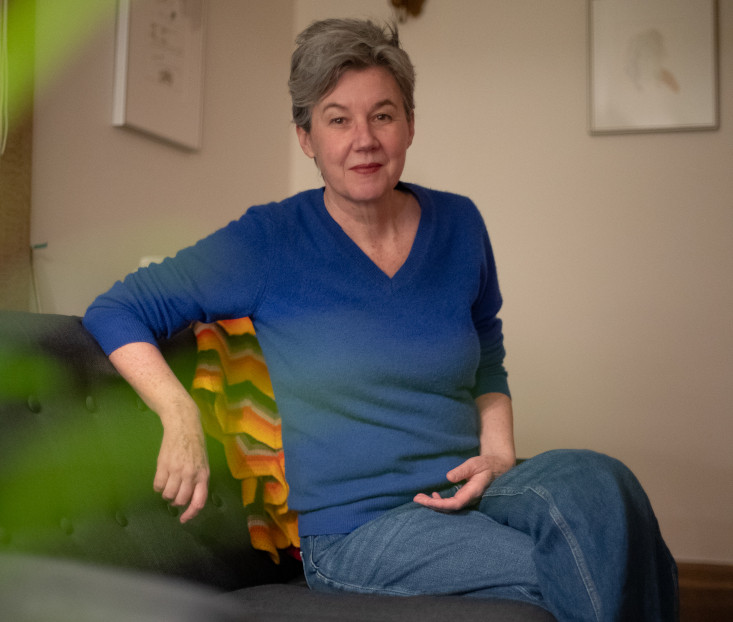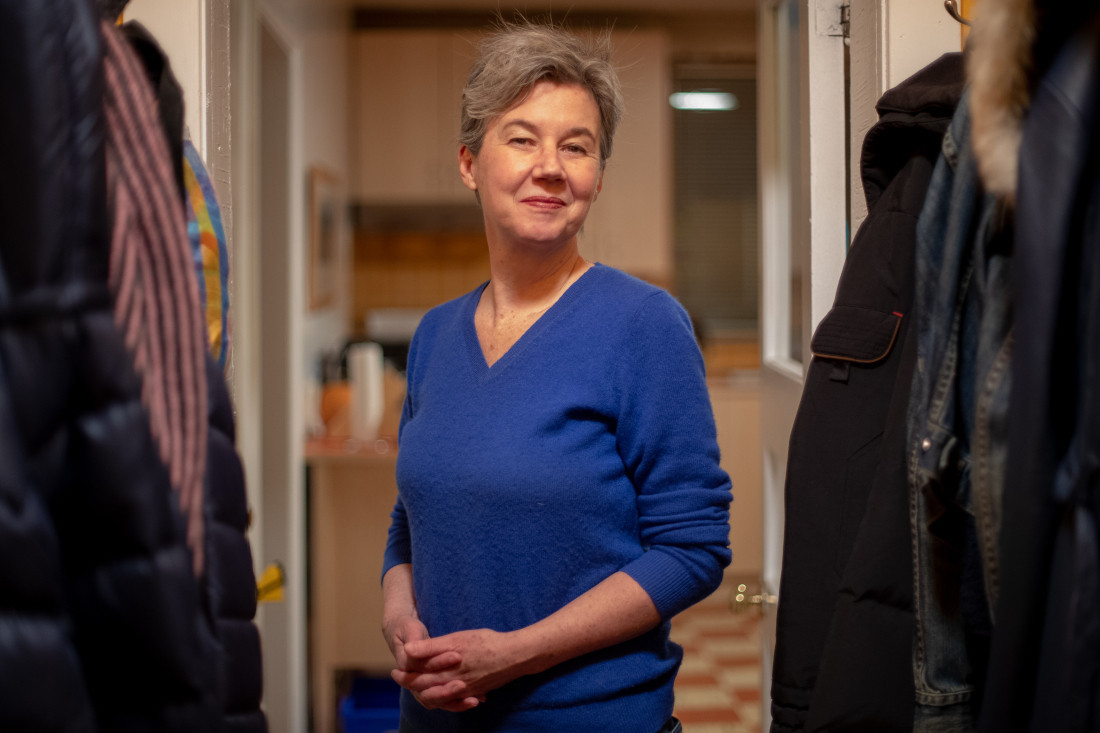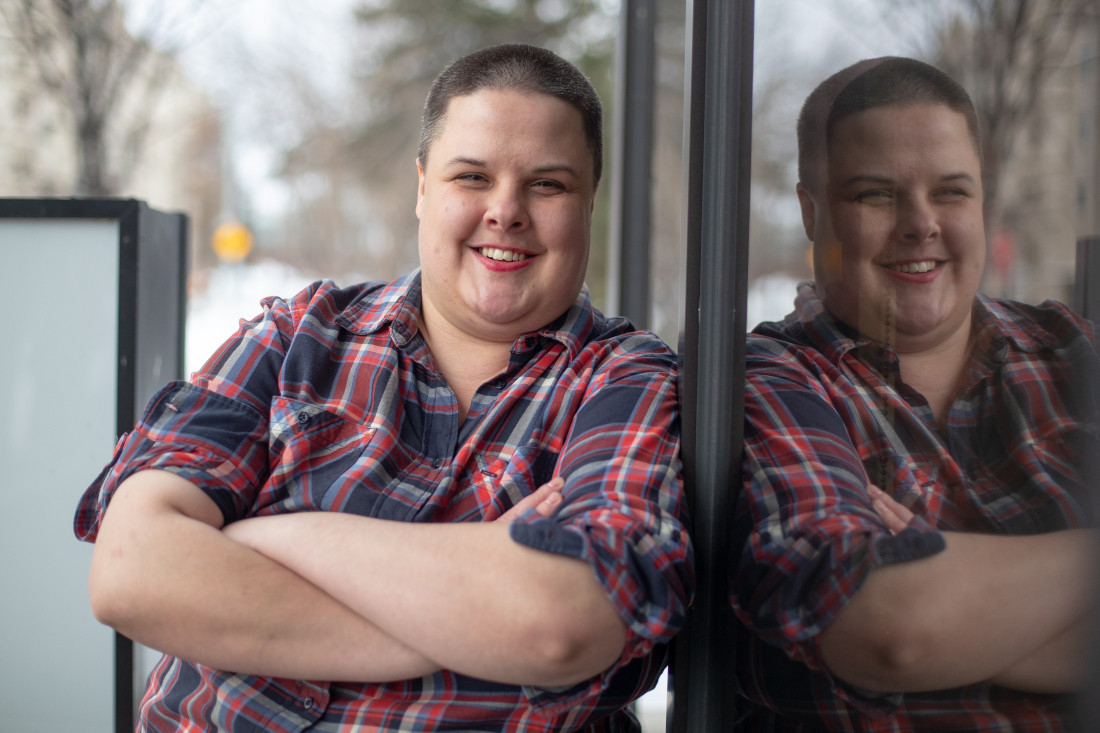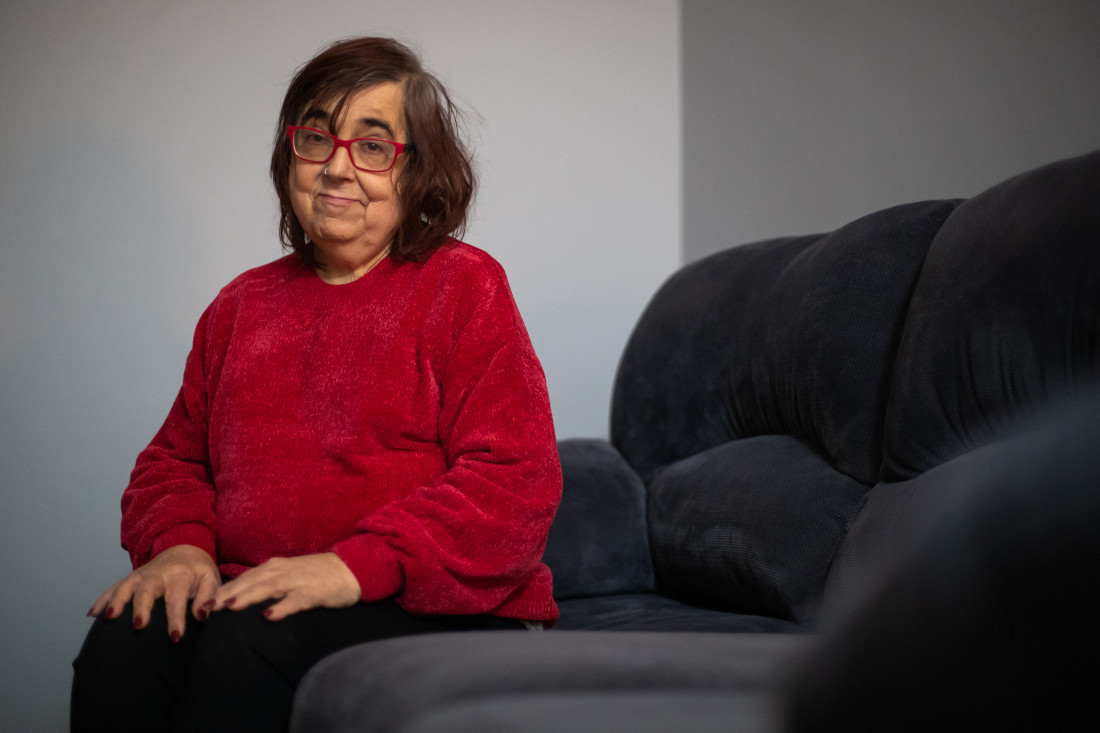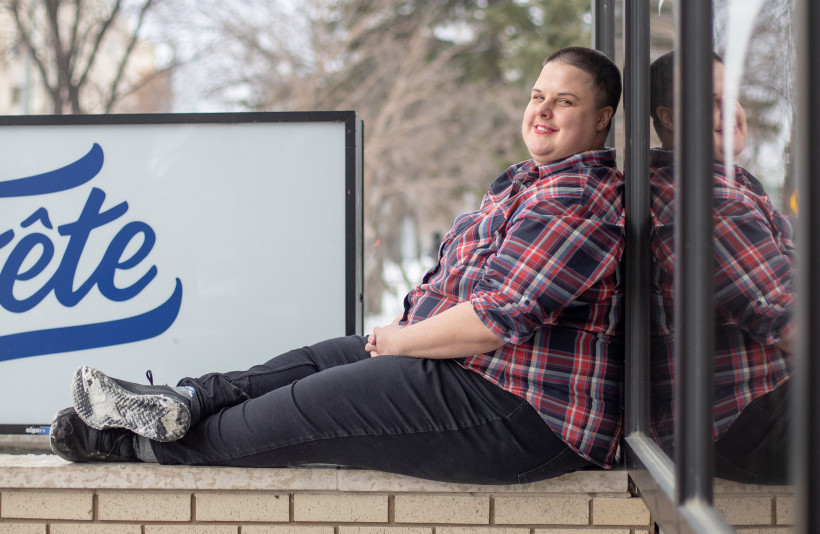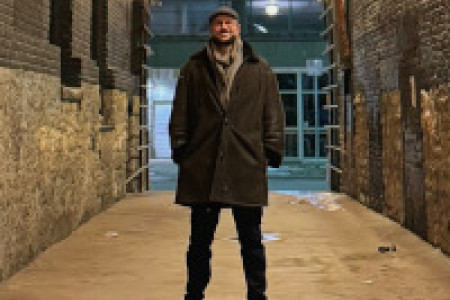Winnipeg lesbians and their ‘ring of keys’
Community and culture create spaces for coming out
Alison Bechdel, a lesbian graphic novelist, published her memoir Fun Home in 2006, where she both processes her grief over her dad’s death and notes moments where she comes face-to-face with her dad’s queerness and her own budding sexuality.
Over just a few panels, Bechdel sketches a moment during her childhood where she met a butch lesbian for the first time who wore a ring of keys attached to her belt. Years later, “Ring of Keys” became a popular song in the musical adaption of Fun Home. It’s a song about identity. And sometimes, there are parallels between loss and coming out, even when you only come out to yourself.
“I don’t know where you came from / I wish I did / I feel so dumb”
I was 12 years old when I had my first sexual fantasy about another girl. I was half asleep at the time, and when I came to, I remember thinking, “Wait, do I like women?”
The thought terrified me. I didn’t know much about queer communities except that they were marginalized. I didn’t want to lose future jobs, friends or family for something I had no control over and didn’t understand.
I had previously considered myself an ally. My dad had told me again and again that what people did in the bedroom was no one’s business but their own, and I knew that love is love, et cetera. I still didn’t want to be a part of a group of misfits and strangers. Somehow succeeding at peak compartmentalization, I promptly forgot about my own queerness for about four years.
On coming out, Shawna Dempsey says, “The reason I didn’t come out (before I was 25) was it was very difficult to come out, like you risked losing a lot. You risked losing your family. You risked losing your job. You risked losing your housing.”
Dempsey is a Winnipeg lesbian performance artist who has worked collaboratively with Lorri Millan since the ’80s. She also works as the co-executive director for MAWA (Mentoring Artists for Women’s Art).
Rhiannon Frost, a lesbian in her late 60s, cut contact with her family when she came out. “They didn’t accept me for who I was,” she says. “When I was living with my parents, I would (have been) kicked out, and back then, we didn’t have Siloam Mission.”
These fears are normal. Stephanie Adamov, a lesbian in their early 30s, says, “I remember being so scared before I cut my hair short for the first time. I remember before I bought men’s clothes for the first time, but if you can see it, you can be it.”
“I can be an example. I can help someone else have their ‘Ring of Keys’ moment,” Adamov says.
“I thought it was supposed to be wrong”
Legal rights have helped shape Canadian culture’s relationship with queer communities.
“There has been tremendous change in my lifetime, which is a testament to the fact that things can change, and therefore we have to make things change,” Dempsey says.
“The huge difference was legal rights. Once we won the right to marry ... we were protected ... For the most part, the Canadian public just accepted it because it’s the law.”
My mom bought me a subscription to the girls’ magazine Seventeen when I was a teen. In one issue, I hungrily read an article asking the age-old question, “Do I want to be her, or do I want to be with her?”
The cover picture was a stereotypically beautiful woman. By the end of the article, my answer was both, definitely both. A secret horror rose up inside me, and I stashed the article away for safekeeping. Maybe my answer would change if I read it again.
Apparently gay rights made such a boom that by the time I was 16 years old, I said without compromise, “Yeah, I would kiss a girl. What about it?” And yet, I was still afraid, but I was also ready to put my hands up and fight.
“I saw her the moment she walked in”
A few years later, my friend asked me, “What was your ‘Ring of Keys’ moment?”
After she explained the term, I realized there were various moments in my life that stuck out to me. In reality, my first “Ring of Keys” moments were the Lara Croft: Tomb Raider films. I watched these movies as a child again and again.
I didn’t understand why I was so obsessed, why I felt ashamed and intrigued looking at Angelina Jolie’s body. Putting a name to these seemingly scattered moments in my life, moments that felt wrong somehow, was like turning the lights on: I could finally see myself.
Some Winnipeg lesbians also described how heterosexuality was so pervasive in their upbringing that these moments of realization were difficult to come by. Dempsey says, “My body hadn’t opened to that possibility (of queerness) before, because it was not reflected in mainstream culture or my family anywhere. So the assumption of heterosexuality was pretty monolithic at that time.”
Similarly, Adamov says, “I grew up in an Orthodox Christian household, so finding those ‘Ring of Keys’ moments was tough when that’s your background.” For example, Adamov says their family would call queer couples “friends.” When Adamov realized they knew a queer person, that was one of their moments.
Dempsey shared one of her “Ring of Keys” moments, too. In high school, she had trouble reading To the Lighthouse by Virginia Woolf for a school project and went to a bookstore to learn more about the author.
“I was asking at the bookstore, ‘Do you have anything about Virginia Woolf?’ and they said, ‘Well, we have this novel based on her life.’ So, I bought the novel. And the novel had graphic sex scenes between Virginia Woolf and Vita Sackville-West, her longtime lover, female lover. And I just found that so incredibly erotic ... (It) opened my body up to that possibility.”
In another way, these moments of revelation are complicated by the intersection of gender and sexuality.
“When I started my transitioning ... I was struggling with my sexual preference,” Frost says. “I came out as transgender in 2005. I attended Pride. I think it was my second time attending Pride when it was over in Memorial Park. I met this young lady. We started a relationship. The first time I saw her there, it was like, could this be the one?” She describes this moment as bells going off.
Like me, some lesbians describe having multiple “Ring of Keys” moments throughout their life. Dr. Heather Milne self-identifies as both queer and lesbian and teaches queer theory and queer literature at the University of Winnipeg.
“I grew up in a remote, rural area on northern Vancouver Island,” Milne says in an email to The Uniter. “I was ... blessed with some great queer role models, even if I only really observed them from a distance. They prove that rural areas can be full of queerness.”
When Milne was a child, they remember their parents would drive them into town. “We would see this very butch woman riding a bicycle on the paved shoulder of the road ... Her name was Sarah, and (my parents) called her “silly Sarah”... I was quite obsessed with “silly Sarah” and would watch for her on the side of the road,” they say.
“I felt a little thrill of recognition and identification whenever I saw her on her bike riding down the road. I knew somehow I was like her ... She buoyed my queer spirits. She also had really great legs.”
Milne’s neighbours served as an example of queer couples, as well. “I would see (Jim Egan and Jack Nesbit) riding their bike down the side of the highway ... Years later I would learn that they were badass queer activists who shaped queer rights in Canada. I was always fascinated by Jim and Jack as a kid,” they say.
Finally, Adamov mentions Winnipeg-born actor Nia Vardalos, best known for her lead role in the film My Big Fat Greek Wedding. Vardalos worked in another film titled Connie and Carla. “This Orthodox Winnipegger that grew up just a few streets down from where we lived ... was doing this show about drag queens, and that’s okay.”
“I think we’re alike in a certain way”
Queer spaces and culture are important for community-building. Milne says, “Queer spaces have a huge impact (on) people’s sexualities and identities.”
For example, Dempsey and Millan moved from Toronto to Winnipeg in the late ’80s in part because of Winnipeg’s “strong, collaborative lesbian community.” Dempsey says, “There was a lot of activity in the ’90s.”
“There was Ms. Purdy’s, of course, one of the longest continually running dyke bars in North America.” Dempsey describes other lesbian and feminist bars, bookstores, film festivals, theatre companies. “It seemed like a very exciting time and place to be exploring our lesbian identities.” Today, some locales that Winnipeg lesbians name as safer spaces for queer people include Pride, of course, as well the Reel Pride Film Festival, Rainbow Stage, Fame Nightclub, Club Happenings, Club 200, Rainbow Resource Centre and Sunshine House. Adamov mentions queer-owned businesses as safer spaces, too, even if the businesses themselves aren’t focused on 2SLGBTQI+ communities.
Still, participating in lesbian communities isn’t just about exploring one’s sexuality. It is also about safety. Dempsey says that in the ’80s and ’90s, “If there was a lesbian space in town, we all went to it, because it was a place where you could hold hands or dance without having a beer bottle thrown at your head.”
She says, “The daily harassment on the street, it was wearing ... especially for gay men, the violence on the street was real and sanctioned.”
However, these lesbians spaces have been disappearing. “Many cities, including Winnipeg, are losing queer spaces like bars and bookstores ... People use the internet to meet other queer folks now when they used to go to bars. Gentrification has also made it hard for these spaces to stay open,” Milne says.
And yet, as Frost says, queerness is everywhere. “Most of the spaces I know in Winnipeg are queer-friendly, and that’s a good thing,” she says. “Even going to a movie ... with your date. There’s queerness all around in the city.”
Published in Volume 77, Number 15 of The Uniter (January 19, 2023)

